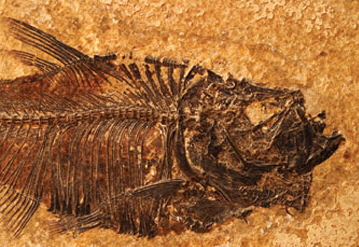Creationist Arthur Biele responded to my response, to his response of my critique of something he wrote on horse evolution [inhales abruptly].
Thankfully he respected my wishes that he not post another book length set of arguments in the comments to my post. He has of course taken this as a blanket refusal on my part to allow him to respond:
Biele: Since you refuse me a full response to your article…
Mr. Biele, I only asked that you not post another extremely lengthy response, in the comments section of my blog and indeed this is a rule of mine, one not restricted to you. If you look at my comments policy you’ll see that this is a request I make of everyone who comments on my blog. Still, I welcomed you to respond to one or two specific points, which we could then discuss further; something which I think would be a more productive way to continue our debate. And I also specifically mentioned other options you could take if you wanted to respond at length.
Once again, you are free to start your own blog (they’re free) or web page and post as long a response to me as you like. Alternatively you could post your comments to the Talk Origins Newsgroup (or some other similar open forum), and simply leave a link in my comments as to where your response could be found (and then I might respond further here).
So it is really your choice.
Now, despite your complaints, you did in fact make a comment of a limited nature about punctuated equilibrium which I am happy to respond to.
Biele: …the PE’s views that theory is not at all complementary to Darwinisn evolution, but was meant to replace it.
Yes, I am aware that this is the caricature of punctuated equilibrium that antievolutionists like you believe in; the problem is it is a caricature, not reality. You see, Mr. Biele, for someone who has some understanding of both the neo-Darwinian synthesis and PE (and who has read the relevant literature), your portrayal of the situation is nonsensical.
Biele: In the plaeontologists views, evidence for Darwin’s gradualistic theory of evolution is refuted by the fossil record.
In some paleontologists’ views, the evidence for what Eldredge and Gould referred to as “phyletic gradualism” is refuted by the fossil record. Not Darwinian evolution as a whole, just what they termed its supposed phyletic gradualism. Furthermore, there are many, including myself, that think that Eldredge and Gould fashioned a bit of a straw-man in their characterization of the main-line synthetic theory.
Biele: The PE theory was a means to save The General Theory of Evolution by proposing a new means by which evolution occurs. Of course that theory of evolution also has its’ critical faults too.
[Sigh] I’m sorry Mr. Biele, but this is simply nonsense. Once again, Stephen Jay Gould:
Faced with these facts of evolution and the philosophical bankruptcy of their own position, creationists continually rely upon distortion and innuendo to buttress their rhetorical claim. If I sound sharp or bitter, indeed I am – for I have become a major target of these practices.
I count myself among the evolutionists who argue for a jerky or episodic, rather than a smoothly gradual, change of pace. In 1972, my colleague Niles Eldredge and I developed the theory of punctuated equilibrium. We argued that two outstanding facts of the fossil record —geologically “sudden” origin of new species and failure to change thereafter (stasis) — reflect the predictions of evolutionary theory, not the imperfections of the fossil record. In most theories, small isolated populations are the source of new species, and the process of speciation takes thousands or tens of thousands of years. This amount of time, so long when measured against our lives, is a geological microsecond. It represents much less than one percent of the average lifespan for a fossil invertebrate species – more than 10 million years. Large, widespread, and well-established species, on the other hand, are not expected to change very much. We believe that the inertia of large populations explains the stasis of most fossil species over millions of years.
We proposed the theory of punctuated equilibrium largely to provide a different explanation for pervasive trends in the fossil record. Trends, we argued, cannot be attributed to gradual transformation within lineages, but must arise from the differential success of certain kinds of species. A trend, we argued, is more like climbing a flight of stairs (punctuations and stasis) than rolling up an inclined plane
Since we proposed punctuated equilibria to explain trends, it is infuriating to be quoted again and again by creationists – whether through design or stupidity, I do not know – as admitting that the fossil record includes no transitional forms. Transitional forms are generally lacking at the species level, but they are abundant between larger groups. Yet a pamphlet entitled: “Harvard Scientists Agree Evolution Is a Hoax” states: “The facts of punctuated equilibrium which Gould and Eldredge . . . are forcing Darwinists to swallow fit the picture that Bryan insisted on, and which God has revealed to us in the Bible.” – Gould (1983) “Evolution As Fact And Theory” in Hen’s Teeth and Horses Toes, pp.253-262, (Emphasis mine)
And now, 27 years later, Arthur Biele continues the distortion.
Biele: I was preparing a reply in my mind as I read each of your arguments and noting the many sophistical defenses you used in your long awaited reply. A long reply deserves an equal response, And it would have taken me a few days due to my busy schedule. But as you told me what amounts to be ‘take a hike’, that your site is reserved for your own views and accolades, I will honor your wishes. I indeed do plan to actually ‘take a hike’ as it would be good for my health.
As I said it’s your choice. You have several options open to you to give as long a response as you might like to my previous post, and of course you are welcome to respond on the more limited issue of PE discussed here in the comments below, just keep it concise.
If not, it’s no sand off my beach.



 OK, it took me a while to get to it but I am, as promised, responding to creationist Arthur Biele’s lengthy comments
OK, it took me a while to get to it but I am, as promised, responding to creationist Arthur Biele’s lengthy comments